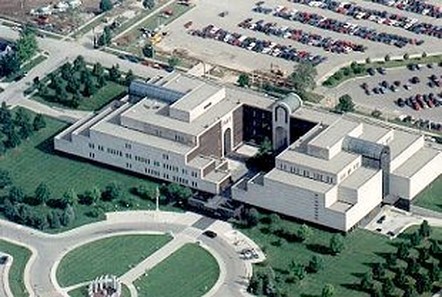lANSING, MICHIGAN
THE LIBRARY OF MICHIGAN
is located in the Michigan Library and Historical Center building
two blocks west of the State Capitol between Allegan and Kalamazoo Streets at 702 W. Kalamazoo St. in Lansing, Michigan. Admission is free.
The building is accessible to people with disabilities.
|
The Mission of the Library of Michigan The Michigan Legislature created The Library of Michigan to guarantee the people of this State and their government one perpetual institution to collect and preserve Michigan publications, conduct reference and research and support libraries statewide. |
|
LIBRARY OF MICHIGAN,
STATE ARCHIVES Seeking Michigan THE ARCHIVES OF MICHIGAN offers researchers a combination of original source records, published histories and indexes, and free access to several online subscription databases. Here are a few suggestions to help you get started as you begin to explore your family history.
Step 1: GATHER. Starting with yourself, and moving back generation by generation, gather and write down what you know about each member of the family: names–dates, and locations of key events and moments in their lives. Ask questions of other family members, there is no one better to offer insight on the family’s past than the people who lived it. Similarly, perhaps someone in the family has already collected genealogical information. Researchers often can fill in lots of information, via the family archives, family bibles, photographs, or other family records. The key with this first step is to gather as much foundational information on the family as possible – the names, dates, and locations are data that will guide your research as you move forward. Step 2: ORGANIZE. Having a lot of information won’t mean much if it isn’t organized properly. Once you have done your homework, spend some time to get properly organized, using pedigree charts, family group sheets, or perhaps a family tree software product. These forms and tools, available online, will help will help you prioritize your research, reveal gaps on the family tree, identify what you know, and more importantly, what you don’t. Step 3: EXPLORE. The U.S. Census is, without a doubt, the most important resource that genealogists utilize in their family history research. It provides that critical foundation from which every future discovery is built upon. Offering a glimpse into the family every 10 years, the census is available from 1790-1940. (The 1890 schedules were largely destroyed, however.) Researchers can learn about an ancestor’s address, age, marital status, birthplace, parents’ birthplace, naturalization status, year of immigration, occupation, and much more. The U.S. Census can be found online at Ancestry, FamilySearch, and at other sites as well. Step 4: LOCALIZE. As you continue on in your research, be sure to utilize the Archives’ online catalog (www.answercat.org) and the digital collections here at Seeking Michigan to identify specific resources of interest. If you focus on a particular geographic area or record type rather than a sweeping general query, your search results will be much better. Remember that the Archives of Michigan’s expansive collections include more than just Michigan; areas of strength including the Great Lakes states, the New England region, New York, Pennsylvania, and the Canadian provinces of Ontario and Quebec. Step 5: EXPAND. Once the critical foundation of the who, when, and where has been established with the U.S. Census, researchers can then easily expand their search and move into other content categories, including vital records, cemetery transcriptions, and naturalizations. Many records, of course, can be found online, but many collections can only be utilized onsite at an archives, library, or county courthouse. In this day and age, researchers can find records of their ancestors only a few seconds after getting started. What a great time to get started on researching your family’s history! We encourage you to begin your journey with us here at the Archives of Michigan. Happy searching! |
|

